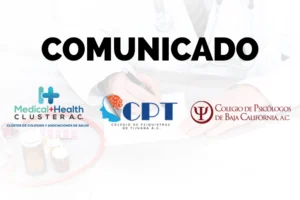En atención a la creciente preocupación sobre la confianza en...
Leer más
COVID Antivirals Appear to Hold Up Against BA.2

While two monoclonal antibody combinations showed neutralizing activity against the Omicron subvariant BA.2, both required substantially higher concentrations to produce a response in patients with COVID-19, Japanese researchers said, while antivirals appeared to be less affected.
Casirivimab/imdevimab (REGEN-COV) and tixagevimab/cilgavimab (Evusheld) inhibited BA.2, but the titer of monoclonal antibodies “required for a 50% reduction in the number of infectious foci” for BA.2 was higher by a factor of 43.0 to 143.6 for the former and by a factor of 1.4 to 8.1 for the latter compared with the ancestral strain and other variants, reported Yoshihiro Kawaoka, DVM, PhD, of the University of Tokyo, and colleagues.
However, the susceptibilities of Omicron/BA.2 to the antivirals remdesivir (Veklury), molnupiravir, and nirmatrelvir, a component of Paxlovid, were similar to those of the ancestral strain and other variants of concern (50% inhibitory concentration values for these three agents that differed by factors of 2.5 to 4.5, 0.7 to 1.6, and 1.5 to 3.3, respectively), the authors noted in the New England Journal of Medicine (NEJM).
“Clinical studies are warranted to determine whether these antiviral therapies are indeed effective against Omicron/BA.2 infections,” they wrote.
Kawaoka’s group examined a biological sample of BA.2, which was isolated from a traveler from India who arrived in Japan, and tested it against the monoclonal antibodies and antivirals.
In January, the FDA limited the use of casirivimab/imdevimab and bamlanivimab/etesevimab, saying neither should be used against Omicron due to reduced activity against the variant.
Kawaoka and team noted that bamlanivimab/etesevimab lost neutralization activity against BA.2, similar to what was seen in FDA’s research.
More recently, the agency scaled back use of sotrovimab; the drug is no longer authorized for treatment of non-susceptible variants, with data showing lower neutralization against BA.2.
For S309, the precursor of sotrovimab, the titer of monoclonal antibodies required for a 50% reduction in infectious foci was higher by a factor of 12.2 to 49.7 for BA.2, the authors reported.
Notably, bebtelovimab, the only monoclonal antibody authorized to treat Omicron, was not included in this analysis. While tixagevimab/cilgavimab was included, this combination is only currently authorized for COVID prevention, not treatment.
A second NEJM study warned of resistance mutations after treatment with monoclonal antibodies following the “rapid development of spike gene mutations associated with high-level sotrovimab resistance in vitro,” in patients infected with the Delta variant. SARS-CoV-2 was isolated up to 24 days after patients received the monoclonal antibody.
Vitali Sintchenko, MD, PhD, of the University of Sydney, and colleagues said the “findings underscore the importance of stewardship of monoclonal antibodies,” particularly since sotrovimab is one of the few with activity against Omicron. They emphasized the importance of post-marketing genomic surveillance of patients who receive monoclonal antibodies to monitor for potentially resistant variants in healthcare settings and the community.
Créditos: Comité científico Covid




